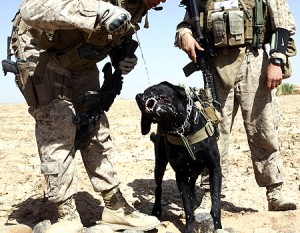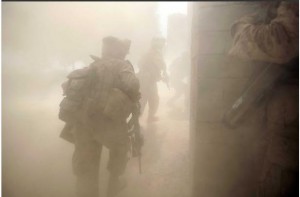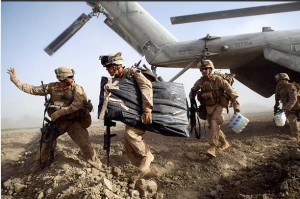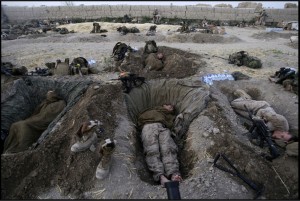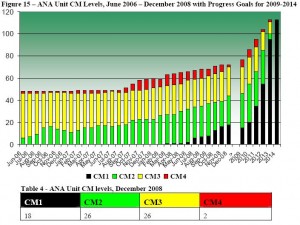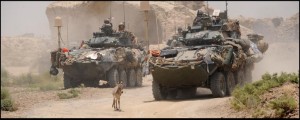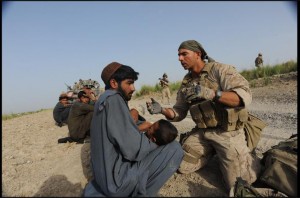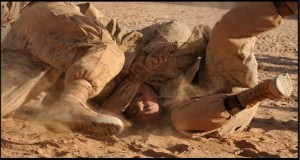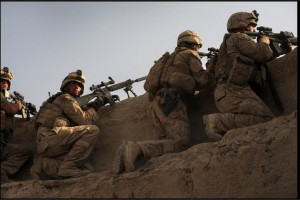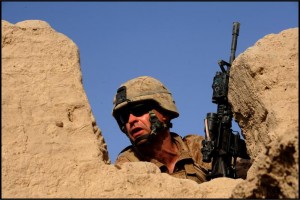It’s a hateful thing to have to learn lessons the hard way more than once. From Iraq we have learned many hard lessons, including but not limited to: (1) there must be enough forces to avoid “whack-a-mole” counterinsurgency, with insurgents slipping out of the pressure points and finding safe haven elsewhere, (2) learning the indigenous language is a force multiplier. The Captain’s Journal is incorrigibly an advocate of the large footprint model and an opponent of the small force projection model for counterinsurgency – and it forever will be that way.
From Afghanistan comes a report that confirms the idea that we (i.e., the current administration) may be learning the lessons of Iraq all over again.
As the US sends more troops to Afghanistan to try to reverse the growing violence, they are relying on the “clear, hold, build” model of counterinsurgency. The US hopes a surge of soldiers will help them clear areas of Taliban insurgents, maintain a lasting presence in those areas to keep militants from returning, and then bring development to attract popular support.
But soldiers in Wardak Province say that the model has been difficult to implement in here. In particular, they say they are caught in a vicious circle: To win over the locals, the troops must bring development, security, and economic prospects. To do this, they have to diminish the presence of the insurgency. But this, in turn, requires that the troops win support of the population.
US forces have already made some progress in the first phase of the strategy. The stretch of the Kabul-Kandahar highway that runs through Wardak, once a magnet for insurgents, has been free of Taliban checkpoints for months. The guerrilla presence along the route had gotten so bad that fuel convoys suffered almost daily attacks …
“How is traffic? Have cars been coming through here and bringing business?” a soldier on a typical patrol asks one merchant, who says business is “OK.”
“Have you seen any bad guys here?” the soldier continues.
“No sir. The bad people stay in the mountains,” the merchant says, pointing to the purple peaks in the distance.
“That’s good. Is there any way we can help you?” the soldier asks.
“Your helicopters fly overhead all night,” the merchant says. “No one in our village can sleep. Please stop this – it is causing major problems.”
The soldier promises to tell his superiors.
Securing the population is good, and relations with the locals must gradually improve. But if the man has told us where the Taliban are – “the bad people stay in the mountains” – then why aren’t we allocating some troops to go chase them in the mountains? This isn’t an EITHER-OR option, it’s a BOTH-AND choice. We especially like it when the enemy separates himself from the population so that we can kill him unimpeded. Or at least, we should.
Earlier, this vicious circle being discussed is the symptom of too few troops. Continuing with the report:
Despite such patrols, the troops generally don’t have enough contact with the locals to convince them that they are here for their good, says Habibullah Rafeh, policy analyst with the Kabul Academy of Sciences. Most of the troops live in small, heavily fortified outposts near urban centers. Most Afghans, however, live in rural areas – only 0.5 percent of Wardak’s population is urban, for example.
“The local village people view the Americans as occupiers, not as allies,” Mr. Rafeh says. “Many don’t have direct contact with the Americans, but almost everyone in those areas feel the Taliban presence.”
To meet such challenges, the new commander of US forces in the country, Gen. Stanley McChrystal, is pushing for an approach that has troops living among the communities they are meant to protect. Soldiers will live in smaller outposts, embedded amid the local population — a tactic that some credit with helping improve the situation in Iraq.
But some warn that extreme caution is needed for such a strategy to succeed. In a culture that prizes privacy, troops have to be careful not to inflame local sensitivities by their presence, says Dr. Wardak. “The people in my district complained to me after the Americans set up a base near their houses,” she says, “because they were worried that the soldiers will look into their homes or that they will be caught in a crossfire.”
Even when the guerrillas are pushed out of one area, abandoning it to the Americans, they usually reassemble in an adjacent area, US military officials here say. Insurgents have been largely dislodged from Jalrez District, for instance, but some have regrouped in neighboring areas.
In other cases, the US has enough forces to capture only a district center. In Jaghatu District, Taliban forces had run the area as a fiefdom, complete with a court and administrative apparatus. The district government had fled, leaving a cluster of four ramshackle buildings that makes up the capital, called the district “center.”
In mid-May, American forces entered and occupied the district center, displacing the insurgents. They set up a makeshift camp among the devastated buildings – one pockmarked structure, ravaged by frequent mortar fire, is an abandoned school, while another is an empty office. A small contingent of Afghan police and Army took up residence in the other buildings.
Together, this combined force is able to maintain control of the district center, but the Taliban still enjoy sovereignty in the surrounding countryside, according to residents. When an American patrol visits these areas, the insurgents melt into the surroundings, sometimes waiting to ambush the soldiers, other times waiting to fight another day.
Is there any clearer way to say it? Whack-a-mole counterinsurgency. We press here, the insurgency expands over there where we have no troops. We press there, it expands over here. Also, unrelated to this report but still a salient point, notice how all of the naysayers of increased force projection decry an increase in forces to something on the order of 400,000, or 500,000, or 600,000 – and I have even seen 700,000 troops. This is the amount, they say, necessary to get the job done. But this objection is a straw man, and no one is requesting half a million troops. And not one of the objectors has given compelling reason to believe that 150,000 troops cannot accomplish the mission. Continuing with the report:
Military officials here say they are still in the process of clearing most areas of insurgents.
“Creating a lasting presence in Sayadabad is going to be hard,” says an American intelligence officer associated with the forces here, who spoke on the condition of anonymity. “Maybe Jalrez is the only district that we can hold and build by the end of our deployment,” which is scheduled for the end of this year, she says.
In Sayadabad and other areas, fighting is growing more intense as the summer months arrive. “It’s going to get nastier before it gets better,” she says.
Mortar fire regularly hits Sayadabad’s Combat Outpost Carwile, which sits close to Jaghatu District. Improvised explosive devices, such as roadside bombs, go off almost daily on the main highways here. In May, the unit suffered its first losses – a Taliban ambush killed two soldiers as they were on a foot patrol.
Civilians have been feeling the toll of war as well. In the midst of a recent firefight with insurgents, troops mistakenly shot a vehicle full of civilians, killing one and wounding others. Earlier this year, the Taliban abducted two interpreters who worked for the troops. There have also been some demonstrations against the troop presence .
The troops admit there are no easy solutions. In the meantime, some soldiers are finding their own ways to win hearts and minds.
Pfc. Joshua Lipori has decided to learn Pashto, the prevalent language here. While standing on guard duty one day at a combat outpost in Sayadabad, he practices his fledgling Pashto with some passing locals.
“Tsenga Ye?” or “How are you?” he asks. “Jore Ye?” – “Are you doing OK?”
The Afghans stare in wide-eyed astonishment at the foreign soldier speaking their tongue. They whisper to each other in Pashto.
“See,” one says to the other, “there are some good Americans.”
Everyone cannot be trained in language skills. But after Boot Camp, SOI or MCT, Marines (and Soldiers) can be selected for more advanced language training as a force multiplier. There is enough time and resources to train in fast roping, squad rushes, room clearing, infantry tactics, and all of the other things infantry needs to know, without starving language. The only limit to this qualification would be language trainers. Both the Army and Marines should increase the financial incentive for language qualifications. It’s that important.
Prior:
Lousy Excuses Against Language Training for Counterinsurgency
The Enemy of My Enemy
